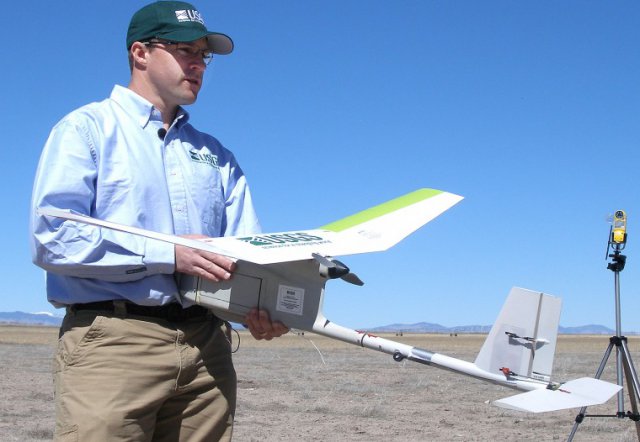 Researchers with the U.S. Geological Survey and the U.S. Fish and Wildlife Service have used unmanned aircraft in three trials to count the number of sandhill cranes that visit the Monte Vista National Wildlife Refuge and found them to be a safe alternative for both birds and scientists.
Researchers with the U.S. Geological Survey and the U.S. Fish and Wildlife Service have used unmanned aircraft in three trials to count the number of sandhill cranes that visit the Monte Vista National Wildlife Refuge and found them to be a safe alternative for both birds and scientists.
“What these systems do is they help to more quickly fly over the cranes,” said Leanne Hanson, a USGS biologist who is overseeing the use of the aircraft. “They don’t flush the birds so there’s no mid-air collision potential.”
More than 20,000 cranes typically make a stopover in the valley from late February to April.
Traditionally, wildlife biologists have used fixed-wing aircraft to count animals but those planes pose a threat to the birds and also use more fuel than their smaller, electrically-charged counterparts. The Raven small unmanned aerial vehicle, as it’s properly called, is 3-feet long and has a 55-inch wingspan. It can fly between 150 feet and 1,000 feet above ground.
The geological survey secured five of the decommissioned craft from the U.S. Army in 2009. While the army maintains ownership, an agreement allows the geological survey to use planes at no cost. Since then, the geological survey had to secure permission from the Federal Aviation Administration to fly over the refuge below 2,000 feet.
They also had to settle on the best time to fly. While the craft can fly with an attached video camera and film during the day, the cranes spend much of those hours dispersed across the valley.
But at night the birds cram into the Monte Vista refuge, which has some of the few wetlands in the valley that aren’t covered with ice in late February and March thanks to the pumping of groundwater.
“It looks like from what we did last night we got fairly good coverage of all the cranes that are on the refuge,” said Jim Dubovsky, a migratory bird specialist with the U.S. Fish and Wildlife Service.
At night a thermal, infrared sensor is attached to the craft and researchers can download the files and count what they see from their own computer screens.
Dubovsky said the cranes have a recognizable heat signature in comparison to the other birds that use the refuge, such as ducks and geese.
Meanwhile the geological survey is developing other uses for the planes.
Hanson said the agency is looking at hot springs within lake and river systems that provide unique habitat, checking historical mating areas for sage grouse and monitoring mountain pine beetle damage in northern Colorado, among other uses.
Source: Pueblo Chieftain

Hi ! How and what practical uses can drones be put to use in anti-poaching and illegal trade in animal parts actions ? What are the overall advantages ?